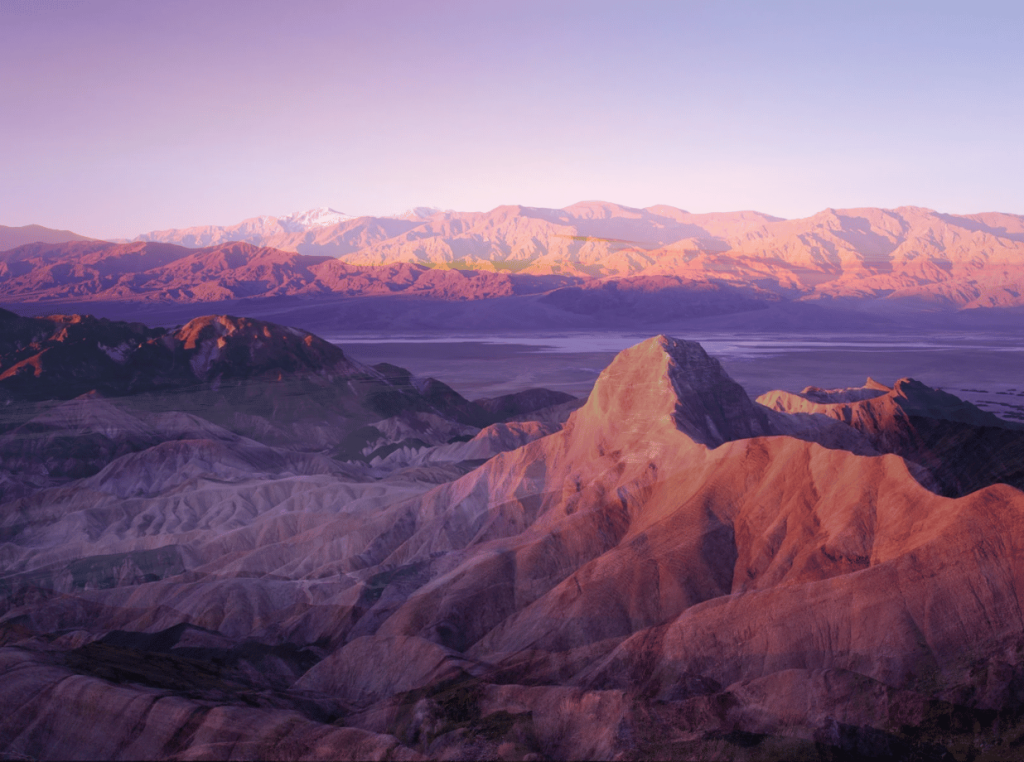Death Valley National Park, one of the hottest and driest places on Earth, partially reopened on October 26, 2023, after its longest closure in history. The park was closed for more than 100 days due to severe flooding and debris flows caused by record-breaking rainfall in July.
The partial reopening includes Badwater Basin, Zabriskie Point, Dante’s View, Mesquite Flat Sand Dunes, and Artist’s Drive. However, many popular areas of the park, including Furnace Creek Visitor Center, Stovepipe Wells Village, and Scotty’s Castle, remain closed.
Park officials say they are working hard to assess the damage and make repairs so that they can reopen the rest of the park as soon as possible. In the meantime, they are urging visitors to be patient and follow all safety guidelines.
What to do in Death Valley National Park during the partial reopening
Here are some of the things you can do in Death Valley National Park during the partial reopening:
- Visit Badwater Basin, the lowest point in North America. Badwater Basin is a vast salt flat that is 282 feet below sea level. It is a popular spot for taking photos and learning about the park’s geology.
- Hike to Zabriskie Point for stunning views of Death Valley. Zabriskie Point is a short but steep hike that offers panoramic views of Badwater Basin, the Funeral Mountains, and the Amargosa Range.
- Drive Artist’s Drive and admire the colorful rock formations. Artist’s Drive is a scenic road that winds through the Black Mountains. The road is lined with colorful rock formations that were created by volcanic activity and erosion.
- Visit Mesquite Flat Sand Dunes and go for a hike or sand sledding. Mesquite Flat Sand Dunes is a large area of sand dunes that is perfect for hiking, sand sledding, and playing in the sand.
- See the stars at night. Death Valley is one of the best places in the world to see the stars. The park has very little light pollution, so you can see the Milky Way galaxy and other celestial objects with the naked eye.
Safety tips for visiting Death Valley National Park
Here are some safety tips for visiting Death Valley National Park:
- Stay hydrated. Death Valley is a very dry place, so it is important to drink plenty of water, especially if you are hiking.
- Wear sunscreen and protective clothing. The sun is very strong in Death Valley, so it is important to protect yourself from the sun’s harmful rays.
- Be aware of the heat. Death Valley can be very hot, especially in the summer. Be sure to avoid strenuous activity during the hottest part of the day and take breaks in the shade.
- Tell someone where you are going. If you are hiking, be sure to tell someone where you are going and when you expect to be back.
- Be prepared for emergencies. Bring a first-aid kit, water, and snacks with you on all hikes. It is also a good idea to have a cell phone with you, but be aware that cell service may not be available in all areas of the park.
Death Valley National Park’s longest closure in history
Death Valley National Park’s longest closure in history was due to severe flooding and debris flows caused by record-breaking rainfall in July. The rainfall caused flash floods that washed out roads, bridges, and campgrounds. The floods also caused debris flows, which are rivers of mud and rocks that can be very destructive.
The park closure had a significant impact on the local economy. Death Valley National Park is a popular tourist destination, and the closure caused millions of dollars in lost revenue for businesses in the area.
The future of Death Valley National Park
Park officials are working hard to assess the damage caused by the flooding and debris flows. They are also working to develop a plan to reopen the rest of the park as soon as possible.
In the meantime, park officials are urging visitors to be patient and follow all safety guidelines. They are also encouraging visitors to support local businesses in the area.
Conclusion
Death Valley National Park is a beautiful and unique place. It is important to protect the park and its resources for future generations. By following the safety tips above, you can help to ensure a safe and enjoyable visit to Death Valley National Park.


